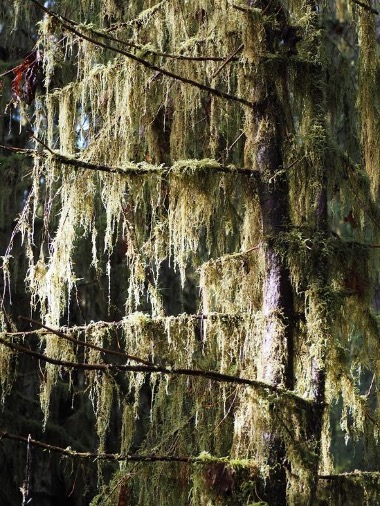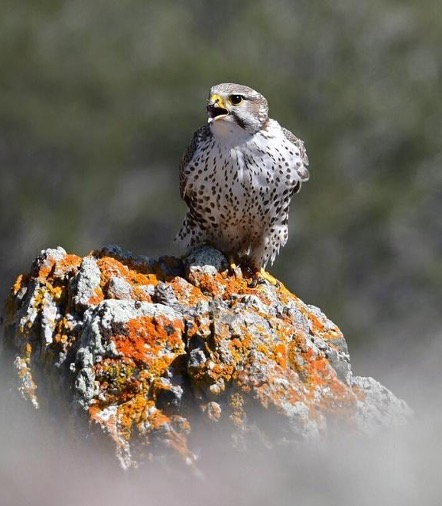
Air, Animals, and Plants
Air pollution is not just a problem for people. Pollution carried through the air can also affect plants and animals. Some animals and plants are tolerant of air pollution. Even when air pollution is high, these plants and animals can survive, grow, and reproduce.
However, many animals and plants are sensitive to air pollution. Sensitive animals may die in response to high pollution. Acid rain from sulfur pollution in the twentieth century killed fish in sensitive lakes and streams. Air pollution can also affect growth and reproduction. Nitrogen pollution slows the growth of trees such as red spruce. Ground-level ozone decreases seed production in sensitive plants, including important crops.
Two NADP committees consider the effects of air pollution upon plants and animals. CLAD science committee describes risk from acid rain and reactive nitrogen air pollution. CLAD develops and applies critical loads. A critical load is the maximum dose of air pollution that something can absorb without harm. Critical loads for lakes, streams, and rivers protect sensitive animals from acid rain. Critical loads for forests protect plants from reactive nitrogen pollution and acid rain.
MELD science committee measures mercury in the air, in leaves, and in animal tissues. Scientists use these measurements to describe how air pollution contributes to mercury contamination in wildlife. High mercury levels in animals interfere with their health, growth and reproduction. High mercury levels also can affect people who eat wild-caught fish.
PLANTS AND ANIMALS IN NATURE
Air pollution can affect the smallest microbes and the largest trees and everything in between. On land, ozone slows the growth of many tree and crop species. Nitrogen pollution changes competition between understory plants. Animals struggle to find food when important understory plants decline. Nitrogen and acid pollution can change the balance between soil bacteria and fungi, affecting soil fertility. Acid rain slows the growth of snails, which are food for many birds and salamanders.
Air pollution washes into streams and rivers. Acid rain has killed aquatic invertebrates and fish, while toxic air pollution increases mercury levels in the fish that people catch and eat. Air pollution washes into the sea. In the sea, nitrogen pollution can cause toxic algal blooms, and can kill seagrasses that serve as fish nurseries. Figure adapted from Greaver et al 2012.
PLANTS AND ANIMALS IN CITIES
Planting a tree in an urban neighborhood benefits the people who live and work there. Trees can cool the ground and air and muffle noise. Trees intercept heavy rains from storm drains and absorb carbon dioxide from the air. Urban trees also provide food and shelter for birds, insects, and mammals.
Air pollution can affect sensitive trees and diminish their benefits in cities. Critical loads describe the sensitivity of different trees to nitrogen and sulfur pollution. By selecting tree species tolerant of local levels of nitrogen and sulfur, city planners can improve the health of urban forests. Use the new CLAD urban tree guide to find an air-pollution tolerant tree to plant in your neighborhood.
RESOURCES:
US Forest Service video series about critical loads for different plants and animals: https://www.youtube.com/playlist?list=PLNsZX2SBTlVl21CSjtvzZYp8Pigp3vKvm
An article from National Park Service about how critical loads protect forests from nitrogen and sulfur pollution: How to Assess Air Pollution’s Impacts on Forests (U.S. National Park Service) (nps.gov)
Dragonflies are biosentinels—meaning we can use them to learn how much mercury is in fish. USGS has an interactive map of dragonflies and mercury levels across the country, mostly in national parks: https://geonarrative.usgs.gov/dmpdatadashboard/
How do urban forests benefit cities? A short video perspective from US Forest Service: Urban Forestry (youtube.com)
SAMPLE SOCIAL MEDIA POSTS:
POST: Learn about which trees are best suited to deposition levels where you live https://docs.google.com/spreadsheets/d/1zhftbpBU8IqvhZpmqVbswT18FbtiT0NrYVxC33vFwwI/edit?usp=sharing
POST: The Air Quality Index (AQI) uses different colors to flag days with unhealthy air. Green=good, Orange=unhealthy for sensitive groups. Lichens do this too: A forest with green lichens hanging from branches are flagging good air quality. Bright orange lichens, though, flag air quality as unhealthy for sensitive lichens.



